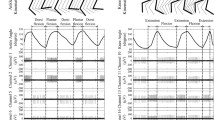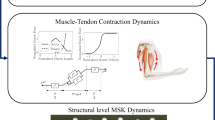Abstract.
It has been shown that dynamic recurrent neural networks are successful in identifying the complex mapping relationship between full-wave-rectified electromyographic (EMG) signals and limb trajectories during complex movements. These connectionist models include two types of adaptive parameters: the interconnection weights between the units and the time constants associated to each neuron-like unit; they are governed by continuous-time equations. Due to their internal structure, these models are particularly appropriate to solve dynamical tasks (with time-varying input and output signals). We show in this paper that the introduction of a modular organization dedicated to different aspects of the dynamical mapping including privileged communication channels can refine the architecture of these recurrent networks. We first divide the initial individual network into two communicating subnetworks. These two modules receive the same EMG signals as input but are involved in different identification tasks related to position and acceleration. We then show that the introduction of an artificial distance in the model (using a Gaussian modulation factor of weights) induces a reduced modular architecture based on a self-elimination of null synaptic weights. Moreover, this self-selected reduced model based on two subnetworks performs the identification task better than the original single network while using fewer free parameters (better learning curve and better identification quality). We also show that this modular network exhibits several features that can be considered as biologically plausible after the learning process: self-selection of a specific inhibitory communicating path between both subnetworks after the learning process, appearance of tonic and phasic neurons, and coherent distribution of the values of the time constants within each subnetwork.
Similar content being viewed by others
Author information
Authors and Affiliations
Additional information
Received: 17 September 2001 / Accepted in revised form: 15 January 2002
Rights and permissions
About this article
Cite this article
Draye, JP., Winters, J. & Cheron, G. Self-selected modular recurrent neural networks with postural and inertial subnetworks applied to complex movements. Biol Cybern 87, 27–39 (2002). https://doi.org/10.1007/s00422-002-0312-7
Issue Date:
DOI: https://doi.org/10.1007/s00422-002-0312-7




